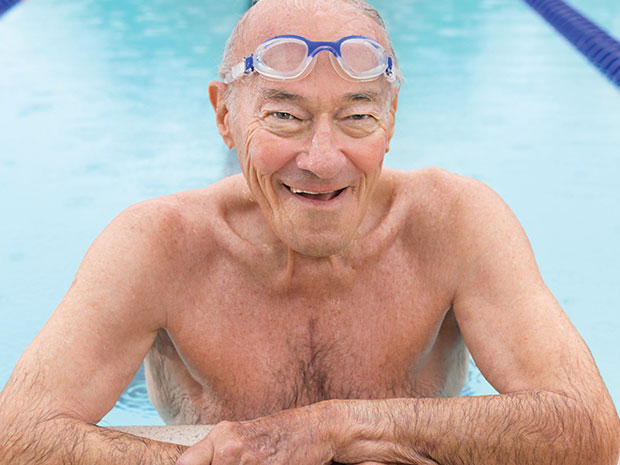
In the balcony, Michelle Michaels heard the cries for help. A nurse practitioner and former employee of MedStar Washington Hospital Center, Michaels says she assumed a doctor would certainly rush to help. “I waited for a minute,” she recalls. “There are doctors everywhere, so I assumed someone would help.” When she realized that no one was moving, she dialed 911 and, to her surprise, was the first to report the incident. After providing basic information, she rushed down the balcony steps, through the lobby, and on to the orchestra floor where she began administering CPR to Dr. Cornfeld.
Sitting nearby, Dylan Mehri, a student at Oberlin College in Oberlin, Ohio, debated leaving his seat and offering his help. He recalls thinking, “I’ll probably just be in the way. Someone else must be coming to help, right?” When no one appeared, Dylan got up. “I didn’t realize what I was doing at first,” he said. “I just took my CPR card out of my wallet and told the woman, Michelle, that I knew CPR and could help.” He knelt by Dr. Cornfeld’s side and began compressions.
According to the American Heart Association, 100 compressions a minute are recommended to best mimic a heart rate and keep blood flowing throughout the body to keep oxygen circulating to the brain.
Michelle shouted to the crowd of onlookers, “Is there an AED or a stethoscope or anything here we can use?” A staff member brought an AED (automated external defibrillator), and Michaels applied the panels to Dr. Cornfeld’s chest. Operating under the instructions of the machine, she administered a shock, then Mehri maintained hands-only CPR until the ambulance’s emergency medical technicians (EMT) arrived a few minutes later.
And that was the key. Those six to seven minutes that Dr. Cornfeld was unconscious were critical. “Time is life,” said Dr. Paul Corso. “Had Michelle and Dylan not acted with the speed and knowledge they did, it is quite possible Dr. Cornfeld would not be with us today".
Dr. Corso, chairman of Cardiac Surgery for MedStar Heart & Vascular Institute at the Hospital Center, performed quadruple bypass surgery on Dr. Cornfeld a few days after he was stabilized. Dr. Corso says that because Dr. Cornfeld swam every day and did some light work with weights, he was an excellent surgical candidate with a strong chance for recovery.
And while Dr. Corso performed the lifesaving surgery, he still gives most of the credit to the good Samaritans who acted that day. “EMTs aren’t everywhere,” he says. “The more people who take the time to get certified in CPR and implementing an AED, the more people will be saved."
After several weeks of recovery at the Hospital Center under the watchful eye of Dr. Corso and a staff that Dr. Cornfeld praises as “being set up just for my recovery and anticipating my every need,” followed by another couple of weeks in a rehab facility closer to his home and family, Dr. Cornfeld is thriving.
With a strong grip on his coffee cup and a shimmer of vitality flashing across his face, he asks, “How do you repay someone for your life?"
Why CPR is vital
Cardiopulmonary Resuscitation, or CPR, is an emergency procedure performed when someone’s heart stops effectively pumping blood. This is called cardiac arrest.
It combines chest compressions often with an automated external defibrillator (AED) to keep blood circulating until help arrives to restore blood circulation and breathing. In cardiac arrest, the heart is unable to pump blood through its chambers. Deprivation of oxygen for too long can cause brain damage and other vital organ damage even if the patient eventually regains consciousness. An AED is a portable electronic device that helps the heart to reestablish an effective rhythm by literally shocking a patient’s heart back into its own rhythm. The compressions in CPR, when done properly and with enough force, push blood through the system, and an AED can help restore the electrical rhythm to get the heart back to beating on its own.













